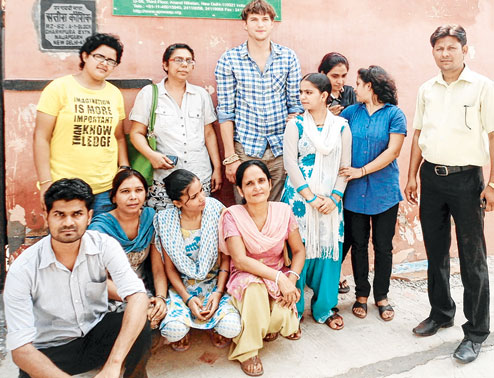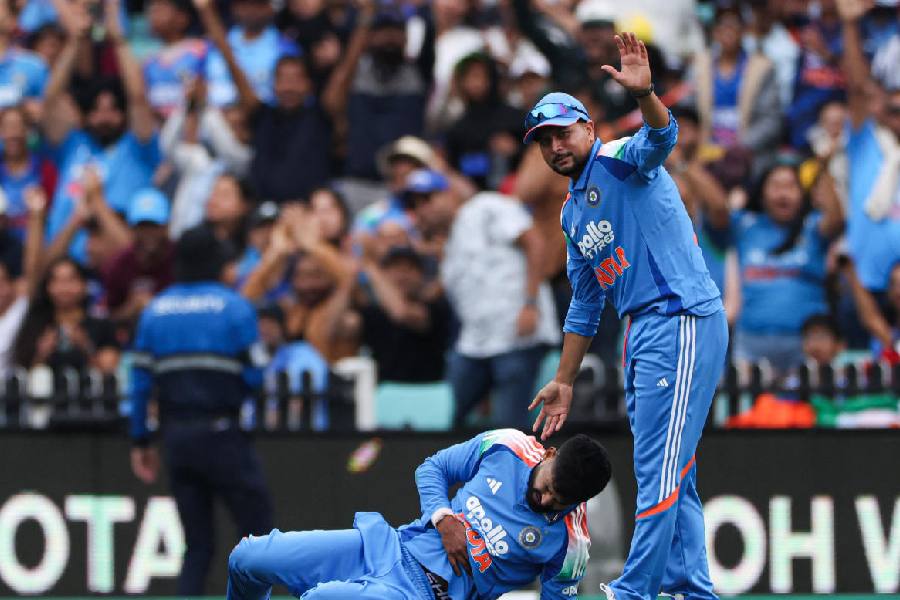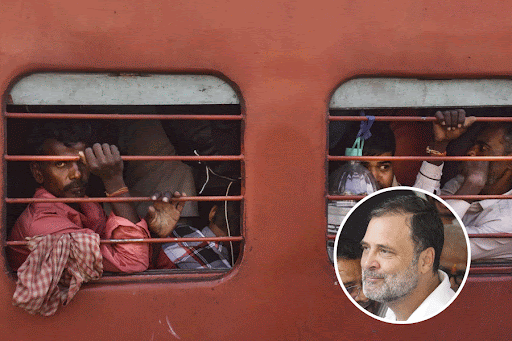 |
| Ruchira Gupta (standing second from left) with Hollywood star Ashton Kutcher, Apne Aap officials and children in Delhi in September last year |
India is on the brink of a paradigm shift in its legal framework to deal with human trafficking based on the Justice Verma Committee recommendations set up after the December 16 rape in Delhi. Through the current Criminal Law (Amendment) Ordinance, 2013 and the proposed changes to the Criminal Law (Amendment) Bill and the Immoral Traffic Prevention Act, 1956, India has finally broadened the definition of trafficking to include all forms of enslavement — from servitude to prostitution. These amendments will bring India on a par with the UN Protocol to End Trafficking in Persons, Especially Women and Children.
The trafficking definition legally explains exploitation, the exploiter and the exploited for the first time in India’s Independent history. Exploitation is defined as forced labour or services, slavery or practices similar to slavery, servitude, the forced removal of organs and prostitution or other forms of sexual exploitation.
The exploiter is clearly defined as the recruiter, transferor, transporter, harbourer or receiver of a person for the purpose of exploitation. The exploited is defined as the forced or bonded labourer, slave, person in domestic or other kinds of servitude and the prostituted woman or child.
By making the consent of victims to their own exploitation irrelevant, the definition frees millions of prostituted females whose survival strategies are written off as choices, from culpability. So far the police and judiciary were often powerless to hold traffickers and end-users accountable, because women and girls were unable to explain that they were seduced, coerced, tricked or forced to submit to their own exploitation. That is because they or their children were hungry or most of their decisions were taken away from them.
The proposed definition of trafficking decriminalises the woman and shifts the blame from the victim to the perpetrator — the person who recruits, harbours, receives, transfers and transports. By doing so, the laws will correct a historical wrong initiated by British colonial authorities. The British had made laws to make disease-free women sexually available for British soldiers and clerks by setting up licensed brothels through the Contagious Diseases Act. This Act did not have a definition of trafficking, and therefore no punishment for traffickers at all. It had very light punishments against clients and pimps and made sure to keep prostitutes invisible and off the streets by punishing them for soliciting in a public place.
Their Act served as the model for our own anti-trafficking law, the Immoral Traffic Prevention Act, which too punished women for soliciting, did not define trafficking or the trafficker and had very light punishments against end-users. Now trafficking will no longer be a victimless crime, but will highlight that prostitution is a system in which marginalised girls, boys and women are controlled by pimps, brothel owners and customers.
The proposed amendments have a much stricter and surer punishment for traffickers and end-users, including life imprisonment for repeat offenders, or traffickers of more than one person and higher penalties for first-time offenders. It also has proposed life imprisonment for “the remainder of that person’s natural life” for public servants such as police officers, who are involved in any way in the exploitation. This strict liability of public servants will help prevent senior public officials, including police officers, from covering up the crime of trafficking if they themselves take pay-offs, buy sex or even anonymously own brothels.
The sterner punishments will also deter the demand for trafficked people by holding end-users and traffickers legally accountable. In Sweden and Norway, similar laws have made the purchase of sex illegal while removing all culpability from women for selling sex, recognising their gender inequality. In both countries the demand for purchased sex and trafficking has come down.
Justice Verma’s recommendations establish zero tolerance for violence against women by ending male impunity on all forms of rape and sexual exploitation, whether for commercial or non-commercial purposes. In a great act of social justice, the recommendations make unacceptable the rape of poor, low-caste and marginalised women, even for commercial reimbursement, by recognising that it is a violation of her bodily integrity. Prostituted women and children are seen as victims of male violence who do not risk legal penalties. Instead, they have a right to assistance to escape prostitution.
The definition proposed by the Verma Committee holds accountable the pimps, traffickers and prostitution buyers who, knowingly, exploit the vulnerability of the females caused by high rates of poverty, unemployment, discriminatory labour practices, gender inequalities and violence against women and children.
These recommendations pave the way for our country to create a contemporary, democratic society where women and girls can live lives free of male violence. It addresses both the urgency of the crisis in India, where 17 women are raped “officially” everyday, and hopefully sets the stage for legislation that will recognise that any society that claims to defend principles of legal, political, economic and social equality for women and girls must reject the idea that women and children, mostly girls, are commodities that can be bought, sold and sexually exploited by men.
To do otherwise is to allow that a separate class of female human beings, especially women and girls who are economically and caste-wise marginalised, is excluded from measures being set in place for women’s security. As well as from the universal protection of human dignity enshrined in our Constitution and the body of international human rights instruments developed during the past 60 years.











